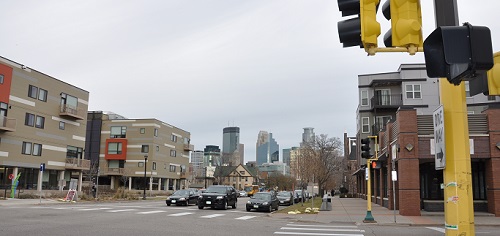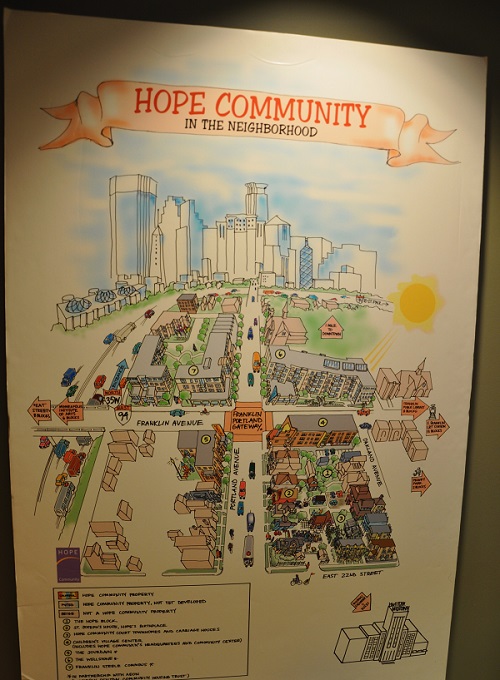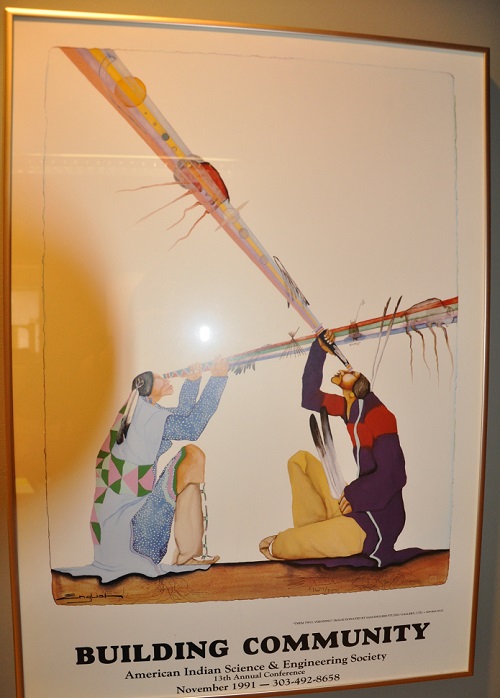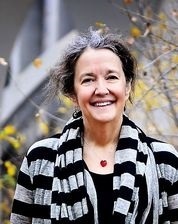Nonprofit Spotlight: Hope Community
 Saturday, December 9, 2017 at 12:00PM |
Saturday, December 9, 2017 at 12:00PM |  Claudia Kittock |
Claudia Kittock | Article by Claudia Kittock, Photos by Rick Kittock
There is Hope
I don’t remember hearing the words ‘Hope Community’ for the first time, but I do remember hearing it from many people who work in the nonprofit sector. When I made an appointment to interview Will Delaney, Associate Director, and Shannon Smith Jones, Executive Director, I expected to hear a story I have heard before. I couldn’t have been more wrong. Hope Community is unique, interesting, and exciting.
If you've driven Franklin Avenue going west, and come to the intersection of Franklin and Portland, I’m sure you have noticed the transformation that has occurred on those 4 corners. The transformation has happened because of Hope Community. They own most of the 4 blocks that make up those 4 corners, with a mission to "create connections that strengthen the power of community members and communities. We cultivate community leaders, build community capacity, care for the places and spaces we develop, and pursue equity and diversity in all we do.”


That area of Minneapolis is unique. 100 years ago it was a neighborhood populated with Norwegian and Swedish immigrants, and has remained a beacon for immigrants from all nations. When the freeway was built, dividing the neighborhood, it also drained resources. In the 1960s, Phillips became a neighbor of Native Americans and African Americans moving from the South. It was and remains the largest urban population of Native Americans in the United States. Today the immigrants are from Latin America and East Africa.
Forty years ago, Char Madigan and Rita Steinhagen opened St. Joseph’s House, affectionately known as the Red House, a shelter operated by looking at people as assets, powerful actors in their own lives. They were determined to listen to people and to view people as part of the solution. Instead of doing things FOR people, she was determined to do things with people in need.

After a series of listening sessions in the early 1990s, it became clear that resisting gentrification was a central issue. Once gentrification begins in a community, prices go up, and the people who live there are often priced out of their homes. The people of Phillips were determined that it would not happen there.
The shelter closed in 1994, and Hope Community determined to modify their approach by focusing on:
- Place
- People
Place includes the redevelopment of the 4 corners of the Franklin-Portland intersection. Aeon in partnership with Hope built 300 units of housing. 70% are permanently affordable, and the remaining 30% are market rate. Commercial spaces were created which include a market, a day care, and a 7500 square foot community garden.
The People approach is based on the model begun with Char Madigan. Community organizing, health, food work, and discussions are just a few things Hope does in this unique approach. One example is the Parks and Power initiative. 700 Hope participants (trained leaders, volunteers, organizers, and community members) are working for racial equity in the city park systems and influencing priorities for park investments. Another example is the investment in the local food economy. 156 community members are creating the building blocks of an equitable, neighborhood-scale food system.

There are so many fascinating aspects to Hope Community, it is impossible to discuss all of them in this article. This is a dynamic community adjacent to the Mill District. Interested? Here’s how to help:
• Learn more. Read about Hope at http://hope-community.org/about/
• Arrange a visit
• Become a volunteer
• Donate at http://hope-community.org/donate/
• Become involved in any or all of the programs offered there. There are no limitations.
- - - - - - - - - - - - - - - - - - - - - - - - - - - - - - - - - - - - - - - -
 About Claudia Kittock
About Claudia Kittock
